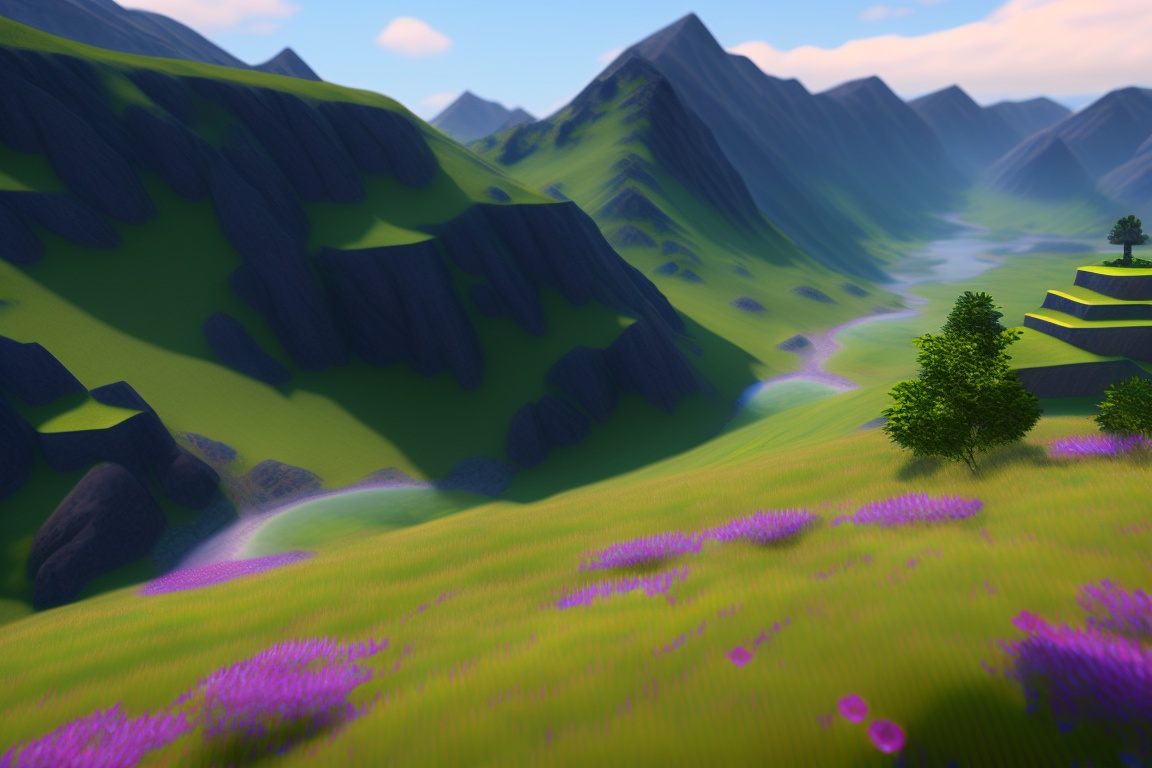Introduction to Dijkstra Maps Algorithm
An overview of the Dijkstra Maps Algorithm and its applications in procedural generation.
What are Dijkstra Maps?
Dijkstra Maps, named after the Dutch computer scientist Edsger W. Dijkstra, are a graph-based data structure used to find the shortest path between nodes in a weighted graph. They are a popular tool in pathfinding and AI navigation in game development. The algorithm works by assigning a cost to each node in the graph, starting from a source node and iteratively updating the costs of neighboring nodes until the shortest path to all nodes is found. This process is efficient and guarantees optimal solutions, making it a powerful tool for various applications in game development.
Procedural Generation and Dijkstra Maps
Procedural generation is a technique used in game development to create content algorithmically rather than manually. This approach allows developers to create large, complex, and varied game worlds with minimal effort and resources. Dijkstra Maps can be used in procedural generation to generate realistic and interesting game environments, such as dungeons, mazes, and terrain. By using the algorithm to determine the shortest paths between various points of interest, developers can create natural-looking paths and corridors that connect rooms, obstacles, and other features. Additionally, Dijkstra Maps can be used to create AI navigation systems that allow non-player characters to traverse the generated environment efficiently and realistically. Overall, the Dijkstra Maps Algorithm is a valuable tool for enhancing procedural generation in game development.
Implementing Dijkstra Maps in Procedural Generation
In this section, we will provide an overview of how to implement Dijkstra Maps in procedural generation, including examples and best practices.
Creating the Dijkstra Map
Once your preferred game development environment is set up it is time to create the Dijkstra Map. The process involves initializing a grid with weights representing the distance from a specific point or points, and then updating the grid using the Dijkstra algorithm. This algorithm calculates the shortest path between nodes in a graph, taking into account the weights of the edges connecting the nodes. In the context of procedural generation, the nodes represent tiles or cells in the game world, and the weights can represent various factors such as terrain difficulty or enemy presence. To implement the Dijkstra Map, start by initializing an empty grid and assigning appropriate weights to each cell. Then, use a priority queue to process the cells in order of their distance from the starting point, updating the distances of neighboring cells as necessary. Repeat this process until all cells have been processed or a specific condition is met, such as reaching a target location.
Integrating Dijkstra Maps with Other Techniques
Dijkstra Maps can be a powerful tool in procedural generation, but they can be even more effective when combined with other techniques. For example, you can use Perlin noise or Simplex noise to generate realistic terrain, and then use Dijkstra Maps to create paths or roads that navigate through the terrain. Alternatively, you can use cellular automata to generate cave systems or dungeons, and then use Dijkstra Maps to determine the shortest path between rooms or key locations. By combining Dijkstra Maps with other procedural generation techniques, you can create more complex and interesting game worlds that provide a unique experience for players.
Challenges and Optimization

In this section, we will explore potential challenges and ways to optimize the Dijkstra Maps Algorithm for better performance in procedural generation.
Common Challenges
Implementing Dijkstra Maps in procedural generation can come with its own set of challenges. One common issue is the computational cost of the algorithm, which may lead to performance issues in larger game worlds. To address this, developers can consider techniques such as limiting the scope of the map or using hierarchical pathfinding. Another challenge is handling dynamic changes in the game world, such as destructible environments or moving objects. In such cases, the Dijkstra Map may need to be updated frequently, which can be resource-intensive. Possible solutions include using incremental updates or incorporating real-time pathfinding algorithms.
Optimizing the Algorithm
Optimizing the Dijkstra Maps Algorithm for procedural generation can greatly improve performance and user experience. Some techniques for optimization include:
1. Reducing the resolution of the map: By using a lower resolution map, the number of nodes to process decreases, which can lead to faster computation times.
2. Implementing lazy evaluation: Instead of calculating the entire Dijkstra Map at once, compute only the portions needed for immediate use. This can save resources and improve performance.
3. Using parallel processing: If possible, take advantage of multi-core processors by parallelizing parts of the Dijkstra Maps Algorithm to speed up computation.
4. Caching results: Store previously calculated Dijkstra Maps or partial results to avoid redundant calculations, especially in cases where the game world remains mostly static.
By considering these optimization techniques, developers can ensure that their implementation of Dijkstra Maps in procedural generation is both efficient and effective.
Conclusion

In this article, we have explored the potential of Dijkstra Maps Algorithm in procedural generation for indie game developers. We have discussed its applications, implementation, challenges, and optimization techniques.
Key Takeaways
Dijkstra Maps offer a powerful tool for procedural generation in game development. By understanding the algorithm and its applications, indie game developers can create more dynamic and interesting game worlds. Combining Dijkstra Maps with other procedural generation techniques can lead to even more complex and engaging environments.
Call to Action
With the knowledge gained from this article, indie game developers are encouraged to explore the potential of Dijkstra Maps in their own projects. By experimenting with the algorithm and integrating it with other techniques, developers can push the boundaries of procedural generation and create truly unique gaming experiences.